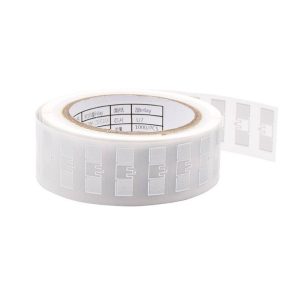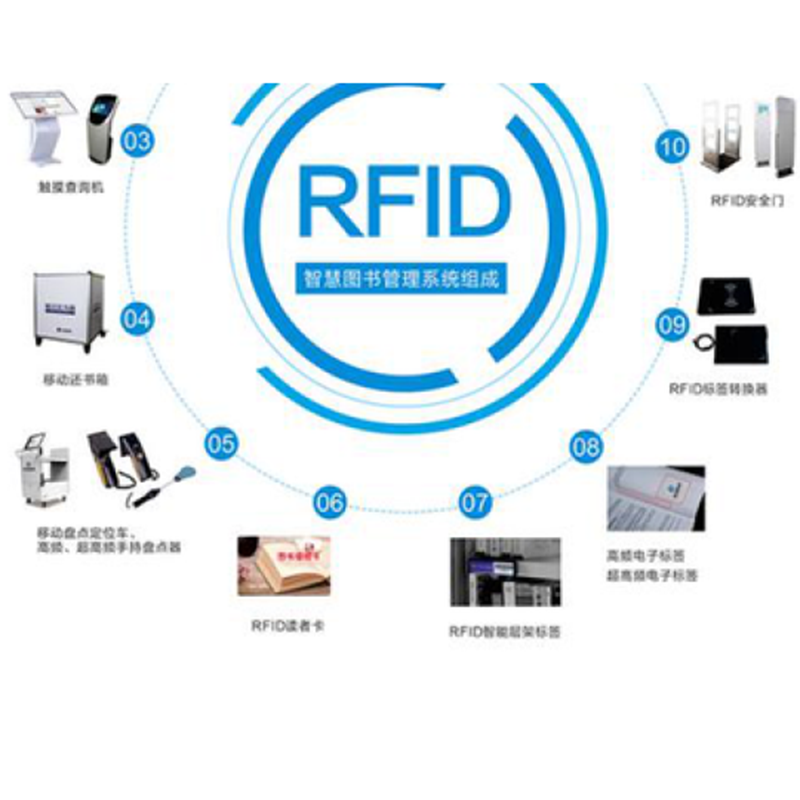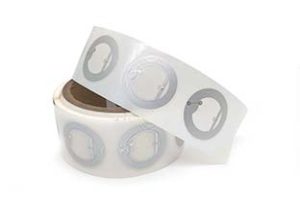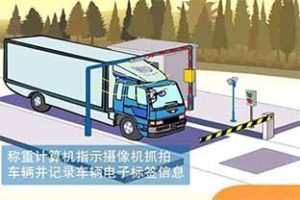RFID electronic tags, types and applications of ultra-high frequency RFID electronic tags 123
What are the types and applications of ultra-high frequency RFID electronic tags? At present, RFID technology in China is constantly developing. RFID electronic tags can be divided into different types according to their working frequencies, such as low frequency (LF), high frequency (HF), ultra-high frequency (UHF), and microwave. The working principle of RFID varies in different frequency bands. RFID in the LF and HF frequency bands generally adopts the principle of electromagnetic coupling, while RFID in the UHF and microwave frequency bands generally adopts the principle of electromagnetic emission. To use it correctly, it is necessary to first choose the appropriate frequency. Each frequency has its own characteristics and can be applied in different fields. Today, we will explain the types and applications of ultra-high frequency RFID electronic tags.

1、 The ultra-high frequency RFID electronic tag consists of three parts: chip, antenna, and packaging scheme. The chip determines the core function of the tag, the antenna design determines the performance of the tag, and the packaging scheme determines whether the tag is suitable for the application environment.
2、 Advantages of ultra-high frequency RFID electronic tags
1. It can recognize high-speed moving objects and read multiple objects simultaneously, with the following advantages:
2. Strong penetration and resistance to harsh environments.
3. Strong security and confidentiality.
4. Reusable, with a large memory capacity for data.
Ultra high frequency RFID electronic tags
3、 The standard protocol for ultra-high frequency RFID electronic tags is currently commonly used in China, including international standards, national standards, industry standards, enterprise standards, etc. The most popular standards are 6C and 6D, namely ISO/IEC 18000-6C (63) and ISO/IEC 18000-6D (64). In addition, there is the Chinese national standard GB/T 29768-2013, which was officially implemented in May 2014 in China
RFID electronic tags, types and applications of ultra-high frequency RFID electronic tags 123
4、 Ultra high frequency RFID electronic tag frequency band
1. The coverage of ultra-high frequency electronic tag frequency bands varies globally, for example:
2. The frequency bands of 840-844MHz and 920-924MHz in China
3. The EU frequency band is between 865MHz and 868MHz, while the Japanese frequency band is between 952MHz and 954MHz.
4. Hong Kong, Thailand, Singapore 920MHz~925MHz
5. The frequency band in the United States, Canada, Puerto Rico, Mexico, and South America ranges from 902MHz to 928MHz. The application of ultra-high frequency electronic tags has a wide range of market applications, including the ability to read multiple tags at once, long recognition distance, fast data transmission speed, high reliability and lifespan, and resistance to harsh outdoor environments. Can be used for asset management, production line management, supply chain management, warehousing, anti-counterfeiting traceability of various items (such as tobacco, alcohol, medicine, etc.), retail, vehicle management, and so on.
RFID electronic tags, types and applications of ultra-high frequency RFID electronic tags 123
1. Vehicle management utilizes dedicated short-range communication between onboard electronic tags installed on the vehicle’s windshield and radio frequency antennas on the ETC lane of the toll station, and utilizes computer networking technology to conduct backend settlement processing with banks, thereby achieving the goal of vehicles passing through the toll station without parking and being able to pay road and bridge fees.
2. Electronic identification and license plate is an application of the subdivision, extension, and improvement of Internet of Things technology. An advanced technology that installs an electronic license plate tag on a motor vehicle, uses the RFID electronic tag as a carrier of vehicle information, and collects or writes data on the electronic tag of the motor vehicle when passing through a road section equipped with an authorized RFID reader, achieving digital management of all vehicles.
3. Product anti-counterfeiting traceability is achieved through the application of RFID technology in various aspects of enterprise product production, achieving anti-counterfeiting, traceability, circulation, and market control, protecting enterprise brands and intellectual property rights, and safeguarding the legitimate rights and interests of consumers.
4. RFID technology is introduced into the current warehouse management of warehouse logistics pallets, which automatically collects data from various operational processes such as warehouse arrival inspection, warehousing, outbound, allocation, warehouse relocation, and inventory counting. This ensures the speed and accuracy of data input in each stage of warehouse management, ensuring that enterprises timely and accurately grasp the real data of inventory, and reasonably maintain and control enterprise inventory.
RFID electronic tags, types and applications of ultra-high frequency RFID electronic tags 123
5. The laundry label in the laundry industry is resistant to high temperatures and rubbing, mainly used for tracking and checking the washing situation of clothes in the laundry industry. This label adopts silicone encapsulation technology and can be sewn, hot pressed, or hung on towels and clothing for inventory management of towel and clothing products. By sewing a button shaped (or label shaped) electronic label onto each piece of fabric until the fabric is scrapped (the label can be reused but does not exceed the lifespan of the label itself). This will make user laundry management more transparent and improve work efficiency. High temperature resistant laundry labels are widely used in textile factories, professional laundry for linen, and laundry shops.
6. Clothing management introduces RFID technology into existing clothing warehouse management, which can automatically collect data from various operational processes such as arrival inspection, warehousing, outbound, allocation, relocation, and inventory counting in the clothing warehouse. This ensures the speed and accuracy of data input in various aspects of warehouse management, ensuring that enterprises timely and accurately grasp the real data of inventory, and reasonably maintain and control enterprise inventory. Ultra high frequency RFID technology can provide real, effective, and timely management and decision support information for managers at all levels through informatization in clothing production, product processing, quality inspection, warehousing, logistics transportation, distribution, and product sales, providing support for the rapid development of business and solving most problems.
7. The ultra-high frequency RFID foot ring electronic tag for live poultry management endows each live poultry with a unique “ID card”, which effectively prevents the food safety of live poultry through traceability management from breeding, quarantine, slaughter, processing to sales. Main application areas: Used in poultry such as chickens, ducks, and geese, widely used in food traceability safety supervision in breeding, breeding, production, epidemic prevention, and sales and circulation.
RFID electronic tags, types and applications of ultra-high frequency RFID electronic tags 123
8. Pig traceability management qualified pork white strips are bound with radio frequency identification traceability labels, and the pork code obtained from the radio frequency identification channel at the factory is automatically associated with the downstream seller’s RFID identity card information obtained from the RFID traceability integrated machine. At the same time, the all-in-one machine is also connected to an electronic scale to obtain weight, and the all-in-one machine prints meat transaction vouchers with a traceability system. The traceability code, weight, and downstream buyer information of this batch of meat products are simultaneously uploaded to the government traceability supervision system. Each piece of pork corresponds to a unique merchant or operator, achieving the information link between live pigs entering the factory and white bars leaving the factory during the slaughtering process.
9. Tire management: By implanting RFID electronic tags, each tire becomes an effective data traceability carrier. Coupled with a tire information database, it can effectively manage the entire lifecycle of tires.
10. The application of RFID technology in intelligent inspection management can achieve the electronicization, informatization, and intelligence of inspection work, thereby improving work efficiency and ensuring the safe operation of power equipment. Suitable for users such as enterprises, independent substations, and centralized control stations to customize and manage equipment information, inspection tasks, inspection lines, inspection points, and inspection projects involved in power inspections, achieving standardized control of inspections and defect management, thereby improving the level of power equipment management.
11. Airport baggage management applies RFID electronic tag technology to the tracking and management of air parcels, ensuring that airlines can track, manage, and confirm the checked baggage of passengers, ensuring the safe and timely arrival of passengers and checked baggage at their destination. The above is a summary of the types and applications of ultra-high frequency RFID electronic tags. The ultra-high frequency RFID technology is still constantly developing, and I believe that more and more fields will be applied. I hope the above sharing is helpful to everyone.
RFID electronic tags, types and applications of ultra-high frequency RFID electronic tags 123
Our R&D center has 12+laboratories. We welcome new and old customers to inquire by phone. Our company supports small batch customization and packaging design,
We have strong research and development capabilities and are a trusted manufacturer. Welcome to call or sales@molddl.com For consultation, please contact us for free samples! Our company supports small batch customization, packaging design, and OEM processing
This article is included in Baidu Wenku






